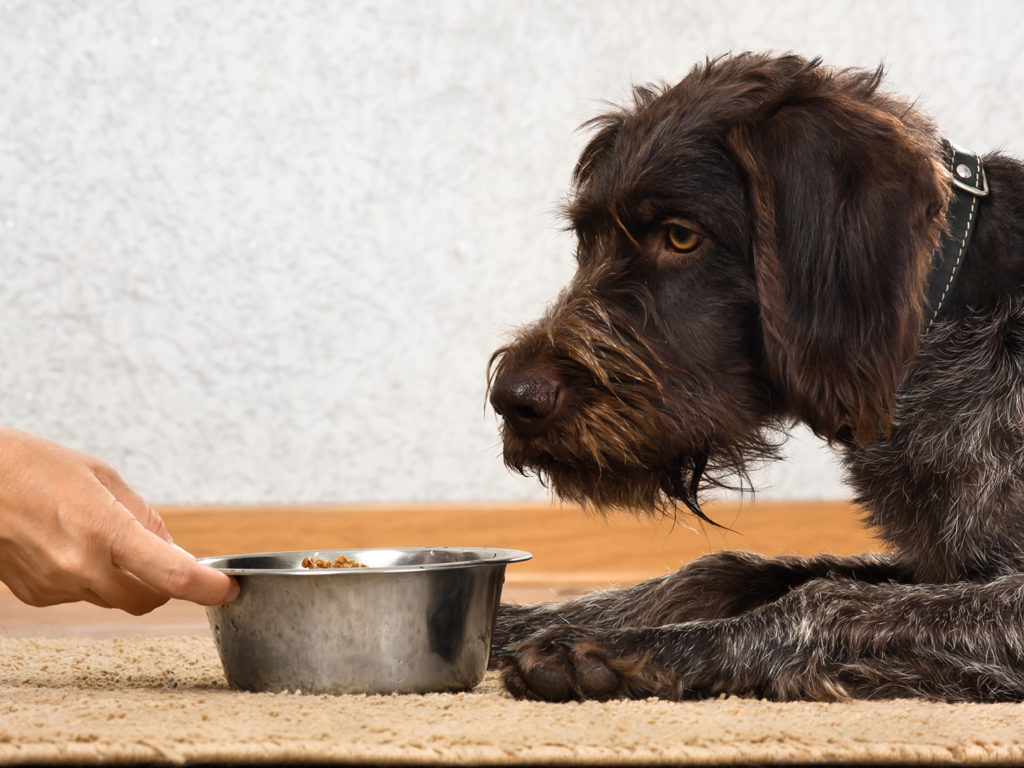The Ins And Outs Of Pet Feeding Tubes

When dealing with pain, illness, or stress, some pets choose to stop eating no matter how many enticing meals they are offered. In certain cases, because a lack of nutrition can lead to serious health complications, veterinarians can suggest using a feeding tube until the pet begins to eat on its own again.
Feeding tubes can be used short-term while a pet recovers from disease or surgery or long-term for an animal with a chronic illness.
Dr. Johanna Heseltine, a clinical associate professor at the Texas A&M College of Veterinary Medicine & Biomedical Sciences, says that while feeding tubes can be a scary concept for pet owners, they are actually easier to manage than you might imagine.
Feeding tubes are generally recommended when a pet has not eaten in three or more days. The tubes can be used to provide food, water, and even medications.
“An important benefit is that most oral medications can be given through a feeding tube,” Heseltine said. “For cats or dogs that are difficult to medicate, this can greatly reduce the stress for the pet and owner. Water can be given through the tube as well, which is helpful for certain patients that need extra water, such as those with kidney disease.”
The three main types of feeding tubes are nasoesophageal (NE) tubes, esophageal (E) tubes, and gastrotomy (G) tubes.
NE tubes are very small tubes that go through the nose and into the esophagus; they are typically only used in-hospital. E tubes enter the esophagus from a tiny incision on the side of the neck, while G tubes go directly into the stomach through a small incision on the side of the abdomen.
While NE and E tubes can be used for short-term cases, G tubes must stay in place for at least two to three weeks for a seal to form where it enters the stomach. Both E and G tubes can be used for many months, as long as no infection or other issues arise, and are typically easy for an owner to learn how to use.
“Feeding your dog or cat through an E or G tube is not difficult to learn, but it may seem a bit strange at first,” Heseltine said. “It helps if you stay calm and make your pet feel relaxed. Often it also helps to have a second person pet the cat or dog so they stay still during the feeding.”
Any canned food can be used for tube feeding as long as it is blended with water to create a smooth and thin consistency. Heseltine often recommends choosing a high-calorie diet so that it can be given less frequently.
“It is important to go slowly when feeding. Generally, the feeding is done over a period of 20 to 30 minutes,” she said. “When it is done this way, the feeding should not be uncomfortable for the pet. You should also watch for any signs of nausea (such as gagging, drooling, and lip licking), which tells us that we need to stop feeding or go more slowly.”
Owners can also reduce discomfort by using room-temperature food; cold food can cause stomach upset and hot food can cause burns inside the digestive tract. If the food has to be warmed, Heseltine recommends using a warm water bath instead of a microwave.
“After the tube feeding, spend a little time petting and talking to your cat or dog to help make the whole experience a positive one,” she said.
Owners will need to keep the tube’s entrance site clean and watch for signs of infection; many special collars and pet shirts are available to help keep the tube in place and prevent the pet from picking at it.
“If the cat or dog starts eating on its own after an E tube is in place (or G tube, if it has been in place at least two to three weeks), we recommend leaving it in until the pet has been eating the full daily calorie requirement on their own for at least a week,” Heseltine said.
No matter how daunting feeding tubes may seem, a veterinarian can help you learn the process so that your pet can feel good and be healthy again.
“For my own pets, I have used feeding tubes three times to get them through major medical conditions,” Heseltine said. “It can be very stressful trying to get your pet to eat and take medications, but a feeding tube puts you back in control.”
Pet Talk is a service of the College of Veterinary Medicine & Biomedical Sciences, Texas A&M University. Stories can be viewed on the web at vetmed.tamu.edu/news/pet-talk. Suggestions for future topics may be directed to editor@cvm.tamu.edu.


